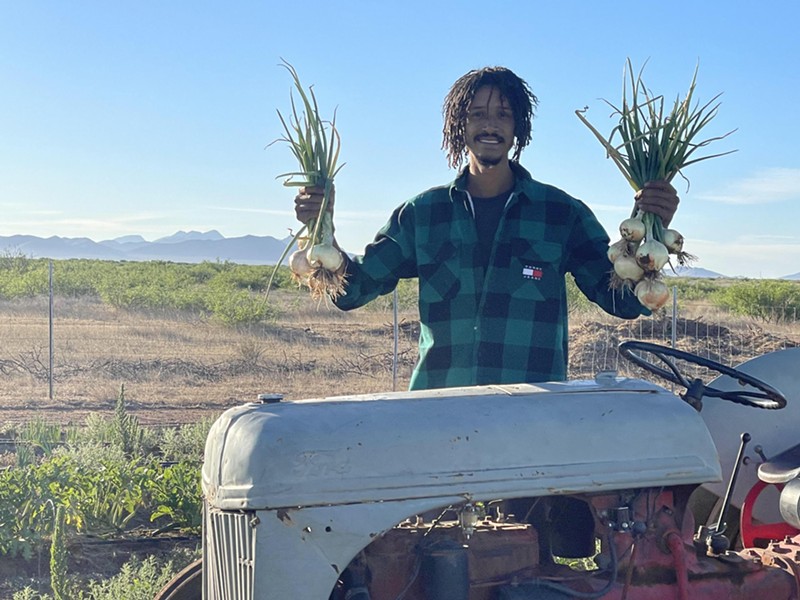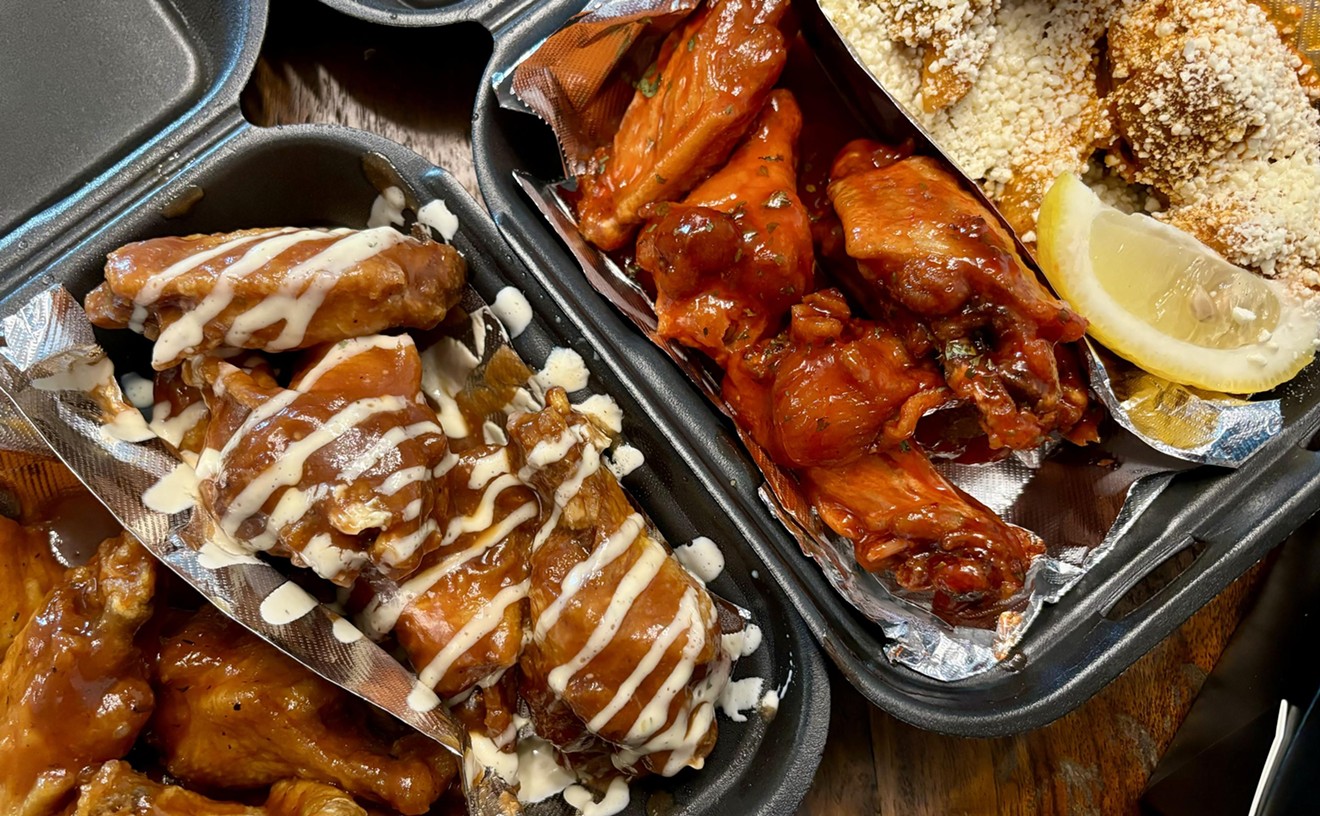The proof lies in the brown, crunchy lawn grass beneath your feet, oleanders barren of blossoms and your garden's herbs wilting in surrender.
But those who receive Community Supported Agriculture (CSA) boxes and brave farmers' markets this time of year continue to see fresh fruit and vegetables. How is this possible?
For some farmers, producing through the summer is not just about CSA commitments, markets or storefronts. It’s about donations that help feed a community.
When selecting which plants to grow, they know it’s best not to fight the inevitable by trying to manipulate conditions to accommodate their wish lists.
"There’s a misconception that nothing grows in the summer,” says Kelly Saxer, lead farmer at Agritopia Farm. “Mother Nature does it best, so it’s best to go with the flow.”

The 11-acre Agritopia Farm supplies about 112,000 pounds of produce to fill 14,000 farm boxes a year for its farm box members.
Courtesy of Agritopia Farm
Grow what will grow
Born and raised in Arizona, Saxer has been farming in the East Valley for 14 years and acknowledges that the summers have always been difficult. But in recent years, the season has run longer with hot temperatures starting sooner and ending later. Like Saxer, many Arizona farmers grow year-round. The secret? Grow what thrives in hot and dry conditions. “The key is timing and going with the seasons. There’s nothing I can do to change it,” Saxer says.
In Gilbert, the 11-acre Agritopia Farm must supply about 112,000 pounds of produce to fill 14,000 boxes a year for its farm box members. Tomatoes, zucchini, cucumbers, melons, eggplants and peppers are among the crops that Saxer and her fellow farmers focus on from June through August.
Watermelon, cantaloupe and summer squash are among the few crops that have continued to grow this summer at Heart & Soil People’s Garden, an urban community garden south of downtown Phoenix. Garden director and seventh-generation farmer Nika Forté says that last summer, the garden produced only one-third of the produce it did during the rest of the year.
Planting drought-resistant trees that also produce fruit and installing shade structures that can lower temperatures by 10 to 20 degrees are among the methods Forté and her team employ.
“We want it warm enough to kill bacteria, but not kill the roots of the plants,” Forté says.
In southeastern Arizona, Desert Sky Produce owner and farmer John Benedict has to navigate the challenges of running his farm in a rural part of Cochise County. Water management has included the recent installation of a well.
“That’s definitely the biggest challenge out here,” says Benedict, who is based in McNeal. “We’ve really had to adapt.”
Benedict, who is Black, makes an effort to not only grow what does well in the heat but also what adds diversity to his crops. Black-eyed peas is one example of a crop that uses less water, thrives in heat and has cultural significance. The farmer uses shade cloth to cool crops down and rotates them around his 1.5-acre farm to change the conditions depending on the crop and weather.
Desert Sky generates about 750 to 1,000 pounds of produce used to supplement weekly CSA bags, support five food pantries and supply goods to a brick-and-mortar storefront, The Local Co-op. The store accepts the Arizona Department of Economic Security’s Electronic Benefits Transfer (EBT) card and offers buy-one, get-one offers that allow customers to double up their Supplemental Nutrition Assistance Program (SNAP) benefits. This makes being able to grow during the summer even more vital.
“We can’t afford to sit out June, July and August,” Benedict says.

Blue Sky Organic Farms owner and farmer David Vose stands in front of his Sudan grass, a cover crop he grows during the summer that keeps the soil cool, moist and healthy for what he will plant in September.
Blue Sky Organic Farms
Saving up for summer
In Litchfield Park, Blue Sky Organic Farms owner and farmer David Vose takes a different approach. He doesn’t grow much during the summer months, opting for cover cropping to preserve the life of the soil and avoid “baking.” In the summer, Vose’s main crop is Sudan grass, a high-yielding drought-tolerant plant that quickly grows as high as seven feet tall. In addition to keeping the soil cool and moist, the grass puts organic matter back into the earth which will help the crops he plants in September.
Vose is among the small group of farmers that typically participates in summer farmers markets. However, this month, Blue Sky is taking a break from its CSA boxes and farmers' market participation. It will resume both at the end of August.
Still, how does he get enough produce for markets and to fulfill 350 CSA commitments each week for the majority of the year?
It requires advance planning. Vose won’t be offering leafy greens and herbs, but heartier options that thrived months ago make an appearance in the summer thanks to 8,000 square feet of refrigeration space. About a third of the produce harvested from his 40-acre farm is currently in storage, saved for the hot summer months.
“We grow things we can store in the cooler or dry storage. Winter squash, garlic, onions that we harvested in May, all of those store well,” Vose says.
Saxer does the same at Agritopia. Spring onions and winter squash fill summer farm boxes.

Agritopia Farm lead farmer Kelly Saxer grows year-round, even during the Valley's scorching summers. “The key is timing and going with the seasons. There’s nothing I can do to change it,” she says.
Agritopia Farm
Keeping it local
Benedict currently holds to his philosophy that nothing goes in or out of Cochise County with regard to what he and his fellow farmers offer in their CSA boxes and storefronts."Our focus is on building our farms here,” Benedict says. “Keeping it local is what I’m most passionate about.”
Vose and Saxer also only offer produce from their farms. However, they both acknowledge that's not the case with every local vendor. Some farms bring in out-of-state produce to boost their market offerings, sometimes labeled as such and other times passed off as their own.
Others, Vose says, order produce from distributors and sell it alongside their own wares without explanation to unsuspecting customers who think they're buying something grown on a small farm in Arizona.
Vose knows participating in the summer markets doesn’t yield a financial gain. Instead, he participates to help keep the markets alive. He pulled out of one farmers market because the organizers allowed what he called “a lot of fraud,” despite him and others reporting it.
“I’m not there trying to support a guy who’s selling it like they grew it,” Vose says. “It doesn’t help our local farmers.”
Saxer says farmers who offer what they grow throughout the year play a big part in educating the public about where their food comes from.
“It’s nice for people to get familiar with what grows in season,” Saxer says.
But sometimes, it’s easy to spot something that may not quite belong.
“If you see colorful bell peppers in January, fruit that looks like it didn’t come from here and it’s not labeled, you know,” Vose says. “If it’s too perfect, it came out of a box.”












